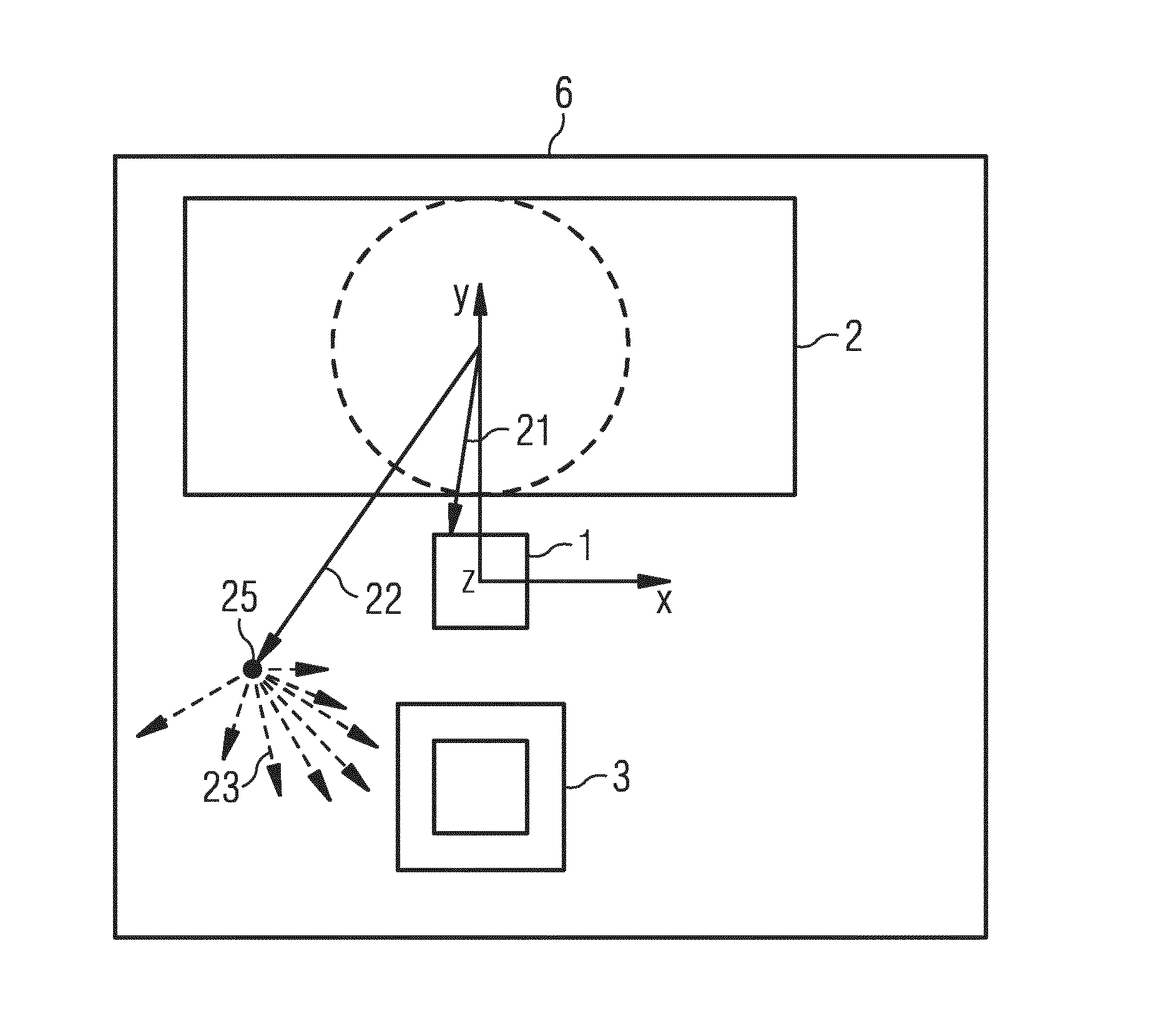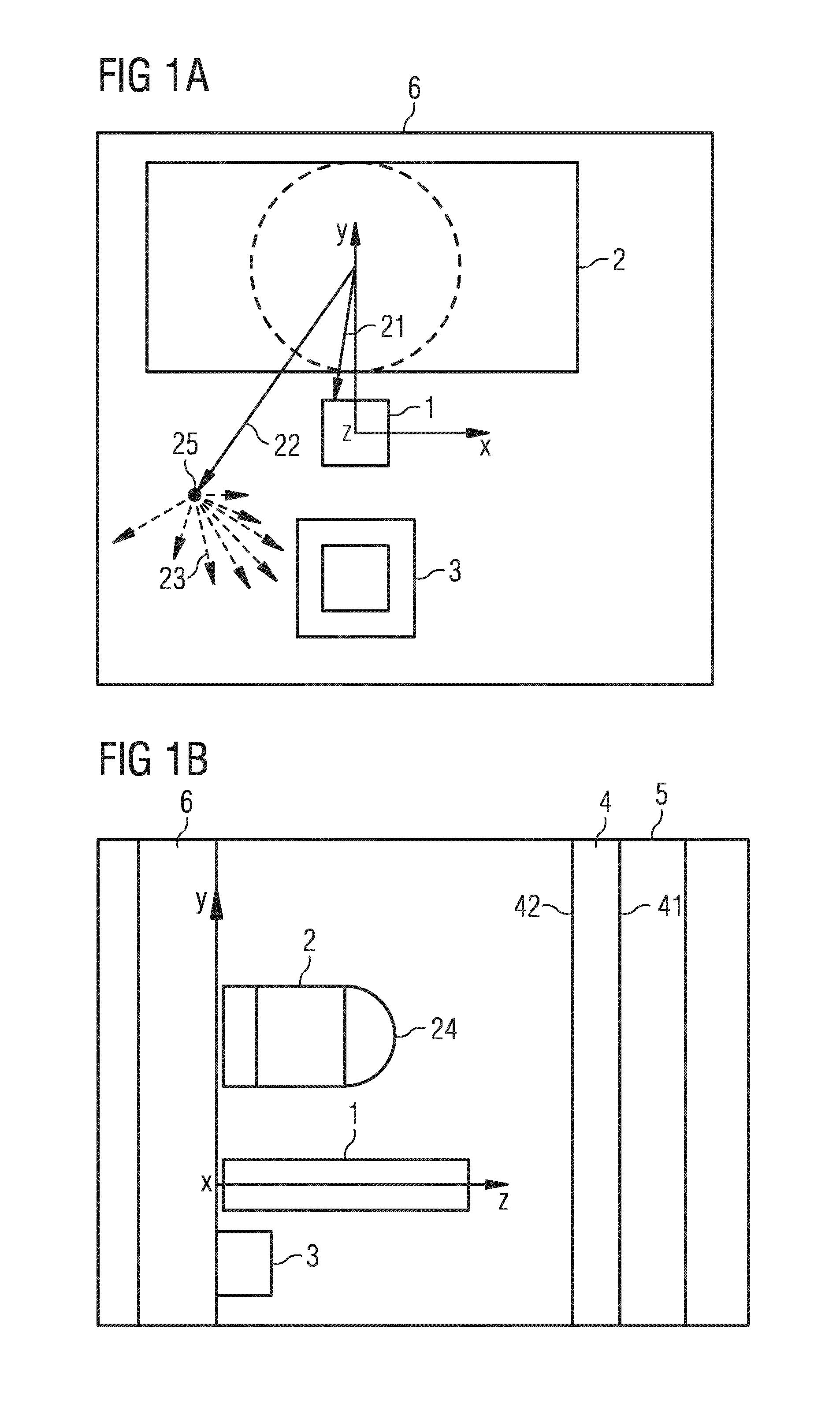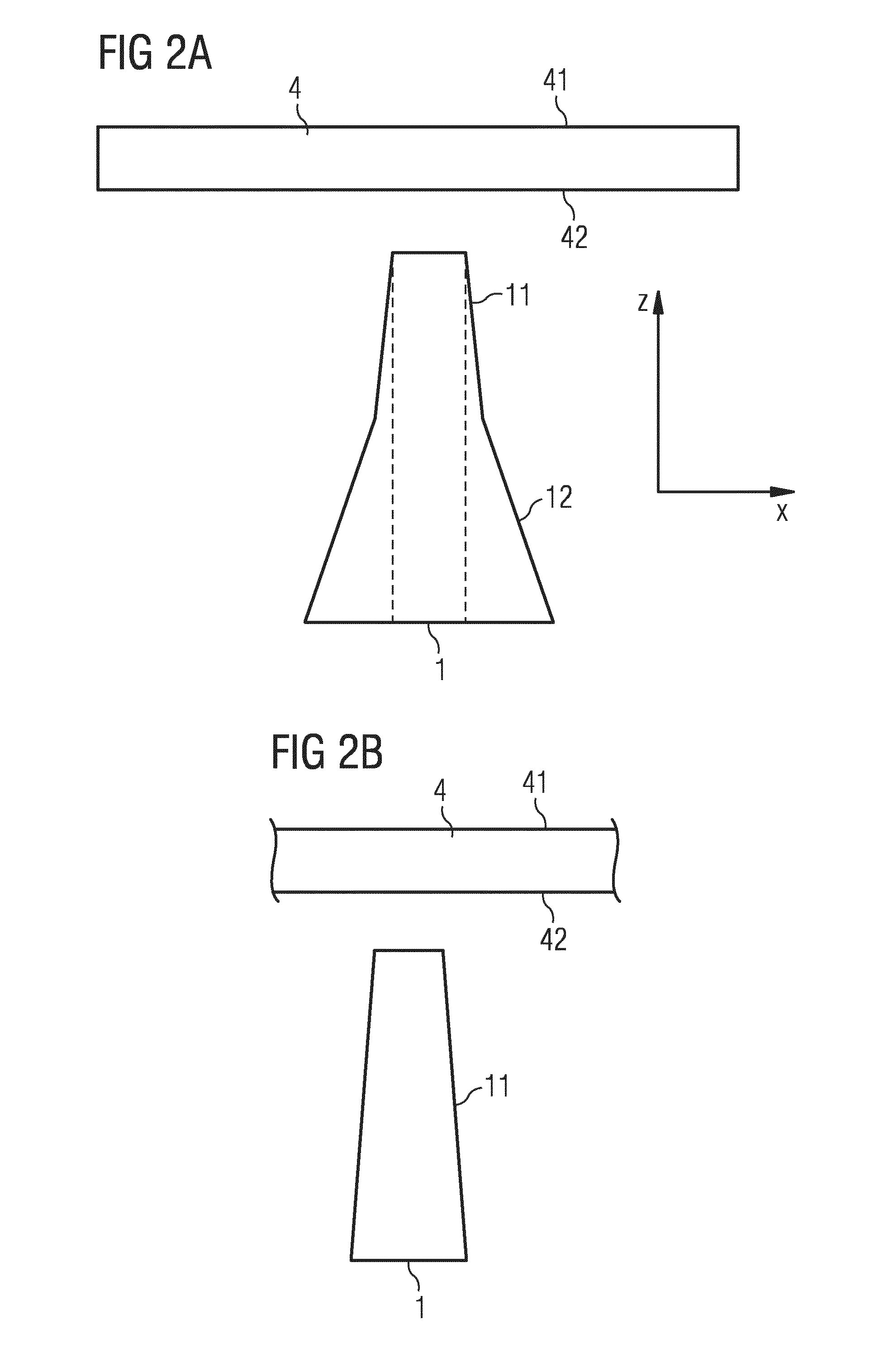Proximity sensor arrangement
a sensor arrangement and proximity technology, applied in the direction of optical radiation measurement, pulse technique, instruments, etc., can solve the problems of wasting precious battery energy, obstructing the light path, and similar problems, and achieve the effect of improving mechanical stability
- Summary
- Abstract
- Description
- Claims
- Application Information
AI Technical Summary
Benefits of technology
Problems solved by technology
Method used
Image
Examples
Embodiment Construction
[0035]FIG. 1A shows a top view of an exemplary proximity sensor arrangement according to the principle presented. The sensor arrangement comprises a light emitting device 2, which in particular, is an infrared light emitting diode, and a photo-detector 3 like a charge-coupled device or a photo-diode. These sensor components are mounted on top of a printed circuit board 6 to which they are electrically connected. The printed circuit board 6 defines an x, y plane arranged along principal axes x and y. In particular, the optical barrier 1, the light emitting device 2 and the photo-detector are mounted on the printed circuit board 6 inline with the principal axis y.
[0036]Placed between the photo-detector 3 and the light-emitting device 2 is an optical barrier 1. The optical barrier 1 comprises a three-dimensional body extending along the principal axes x and y but also along a third principal axis z which is orthogonal with respect to the x, y plane. The optical proximity sensor arrange...
PUM
 Login to View More
Login to View More Abstract
Description
Claims
Application Information
 Login to View More
Login to View More - R&D
- Intellectual Property
- Life Sciences
- Materials
- Tech Scout
- Unparalleled Data Quality
- Higher Quality Content
- 60% Fewer Hallucinations
Browse by: Latest US Patents, China's latest patents, Technical Efficacy Thesaurus, Application Domain, Technology Topic, Popular Technical Reports.
© 2025 PatSnap. All rights reserved.Legal|Privacy policy|Modern Slavery Act Transparency Statement|Sitemap|About US| Contact US: help@patsnap.com



